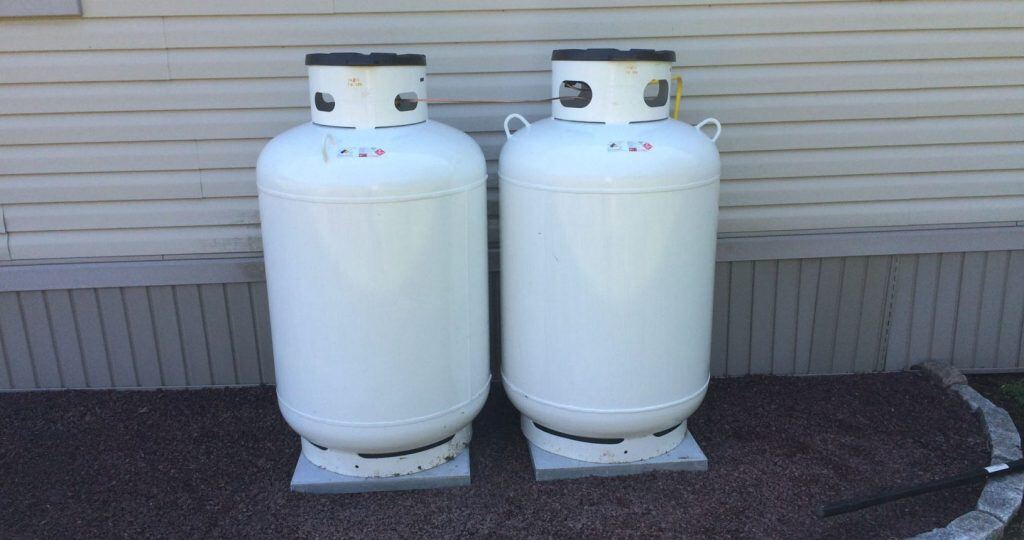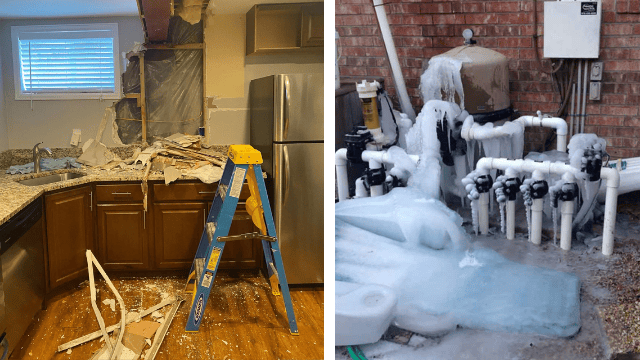For many homeowners, natural gas just isn’t an option. It's not just in rural or off-grid areas, many homes in the Dallas / Ft. Worth communities were never plumbed for natural gas. But that doesn’t mean you have to go without backup power for your home. Plus, there are many benefits of propane backup generators. Guardian Home Generators, we are experienced in designing and installing whole-home generator systems powered by propane—a clean, reliable fuel source that ensures you stay powered through any outage.
Unlike some other generators, our Generac standby generators come out of the box ready to run on natural gas or liquid propane to back up your home's power supply. No propane conversion is necessary.
If you’re wondering how propane works with a generator and what the installation process looks like, this guide breaks it all down.
How Propane Is Connected to a Whole Home Generator
1. Determine the Right Propane Tank Size
The first step is selecting the appropriate propane tank size based on your generator’s power output, your home’s energy needs, and how long you desire to keep your generator running during an all-too-common extended power outage.
The minimum tank size is 120 gallons. The average home backup generator burns 2 - 4 gallons an hour so a single tank will generally provide just over one day of backup, possibly longer. The most common setup is twin 120-gallon propane tanks, like pictured here in this article.
Our team will work with you to determine your needs and recommend the best size for your property and ensure it meets all local codes and safety standards.
2. Install the Propane Tank on Your Property
Once the tank size is selected, it’s installed above ground or underground, depending on your preference and available space. 120-gallon vertical tanks can be placed next to your home or along your property line, but must be 10' from the generator. 250-gallon horizontal tanks must be 10' from any structure or property line.
We handle the delivery, placement, and first fill-up of your propane tank(s).
3. Run the Fuel Line to the Generator
A dedicated propane gas line is then installed to connect the tank to your generator. This involves:
- Digging a trench (if needed) to bury the line
- Running the line using approved piping
- Test to ensure proper fuel pressure
- Connecting the line securely to the generator’s intake port
All fittings, valves, and piping are installed to code, and the system is tested for leaks and pressure stability.
4. Start-Up and Testing
Once connected, your propane-powered generator is tested to ensure it operates seamlessly with the fuel source. Our technicians simulate a power outage to verify automatic transfer switch activation and consistent fuel flow.
At Guardian Home Generators, we don’t consider the job complete until your system runs flawlessly.
5. Propane Refueling
After you are set up and running, your generator will cycle weekly for 15 minutes to keep everything running in tip-top shape. As mentioned above, a generator will burn about 2 - 4 gallons an hour. About once per year, you will want to have your tank(s) topped off. We recommend Northwest Propane for your delivery; they are experts in our area with impeccable service and knowledge. Propane trucks are not allowed to fill from a public street or alley; the propane truck must have access to your driveway and must be within 125 feet of the propane tank.
Why Use Propane for Your Backup Generator?
Propane is a clean-burning, long-lasting, and easily stored fuel that works exceptionally well in areas where natural gas isn’t available. Benefits include:
- Independence from utility lines
- Reliable performance in extreme weather
- Long shelf life with minimal degradation
- Safe storage in certified tanks
Plus, propane is ideal for homes in Texas and other regions prone to grid outages or severe storms, where a reliable backup power system can be the difference between safety and costly damage.
Trust Guardian for Safe, Professional Installation
Unlike some competitors, Guardian Home Generators doesn’t cut corners or use cookie-cutter solutions. We assess each property individually, custom-design your propane fuel system, and install your generator with expert care. From permitting and inspections to fuel coordination and long-term maintenance, we handle it all.
Ready to Get Started?
If your home isn’t connected to natural gas, propane offers a dependable, flexible alternative. Let our team show you how easy and affordable it is to keep your home powered, no matter what.
Schedule a free consultation today and take the first step toward peace of mind.





